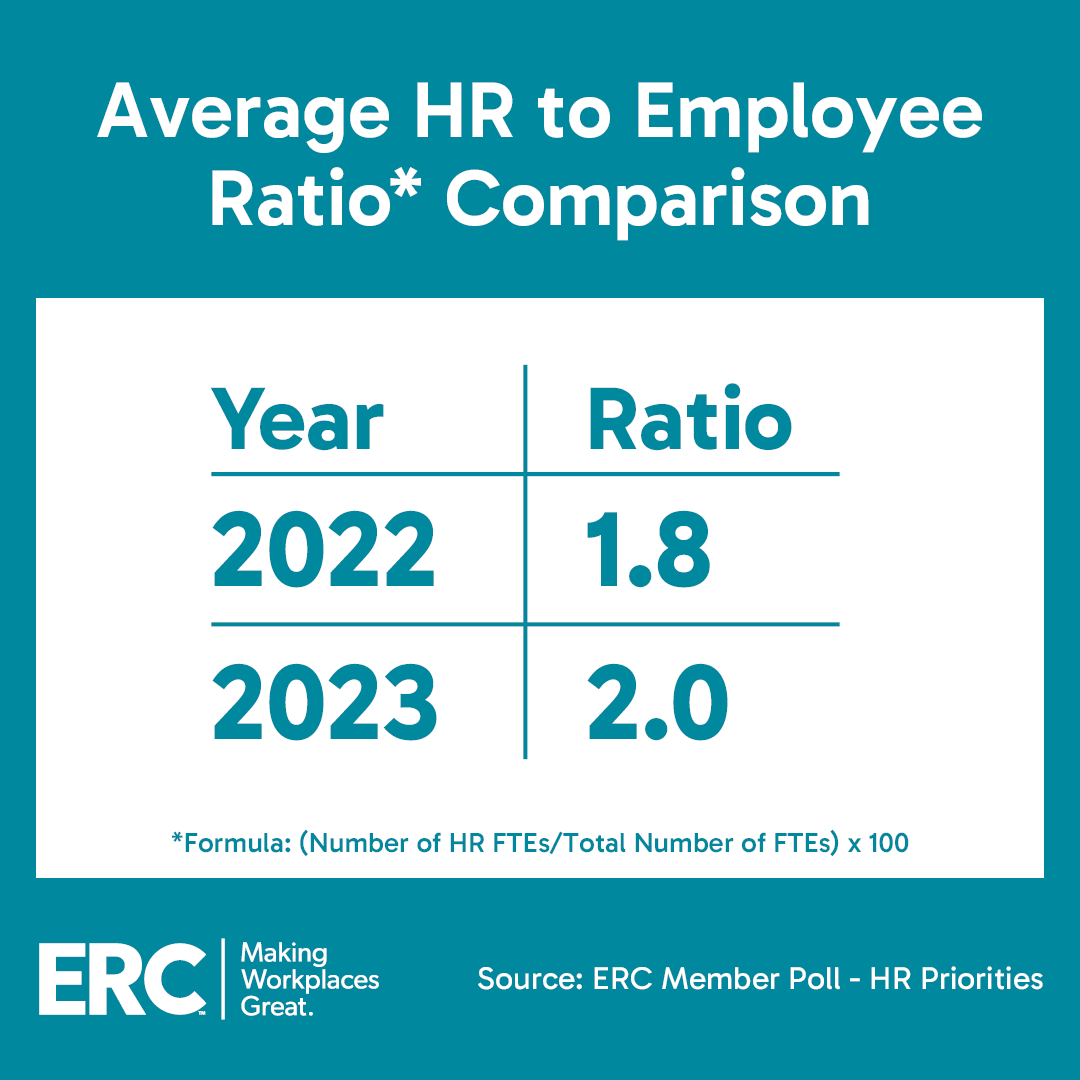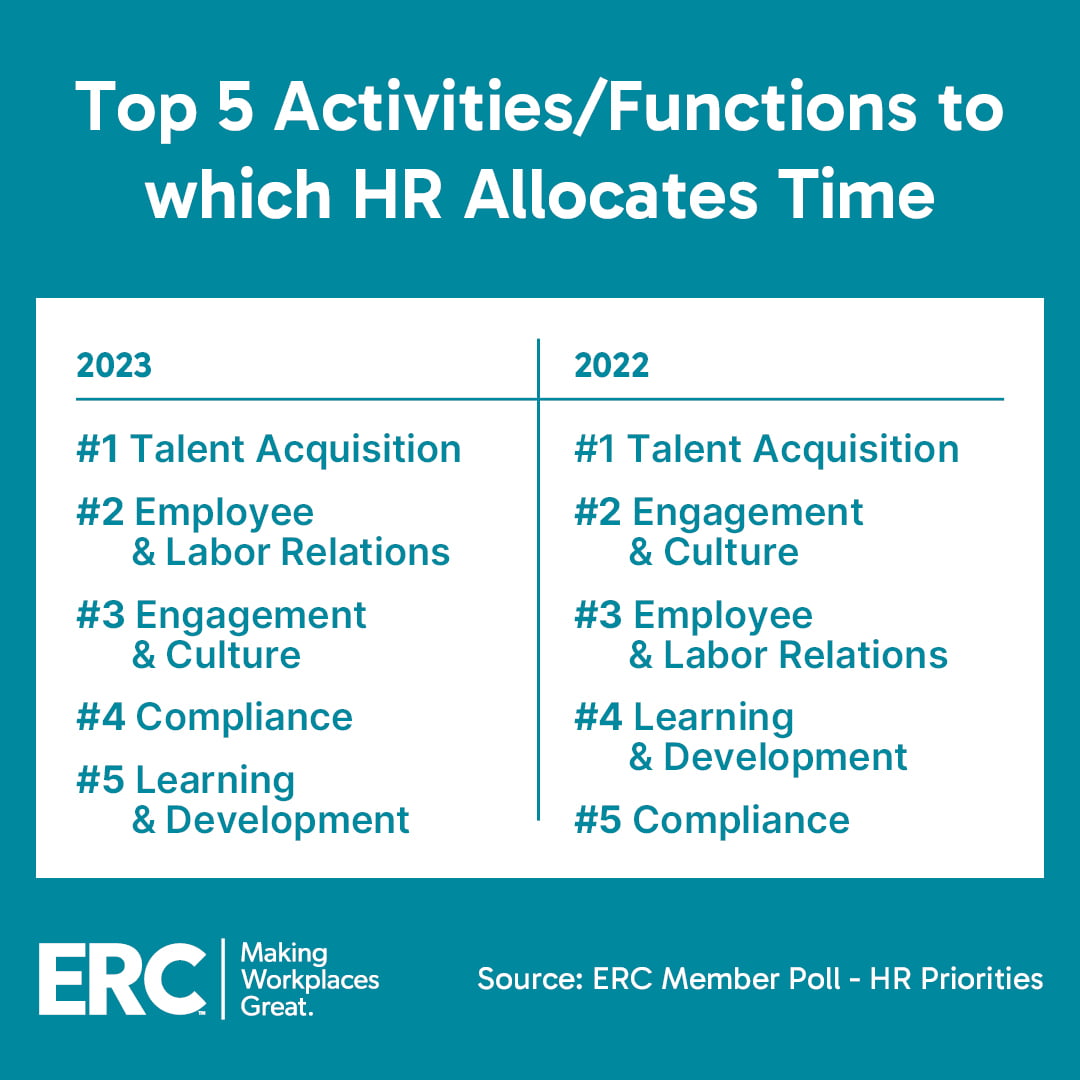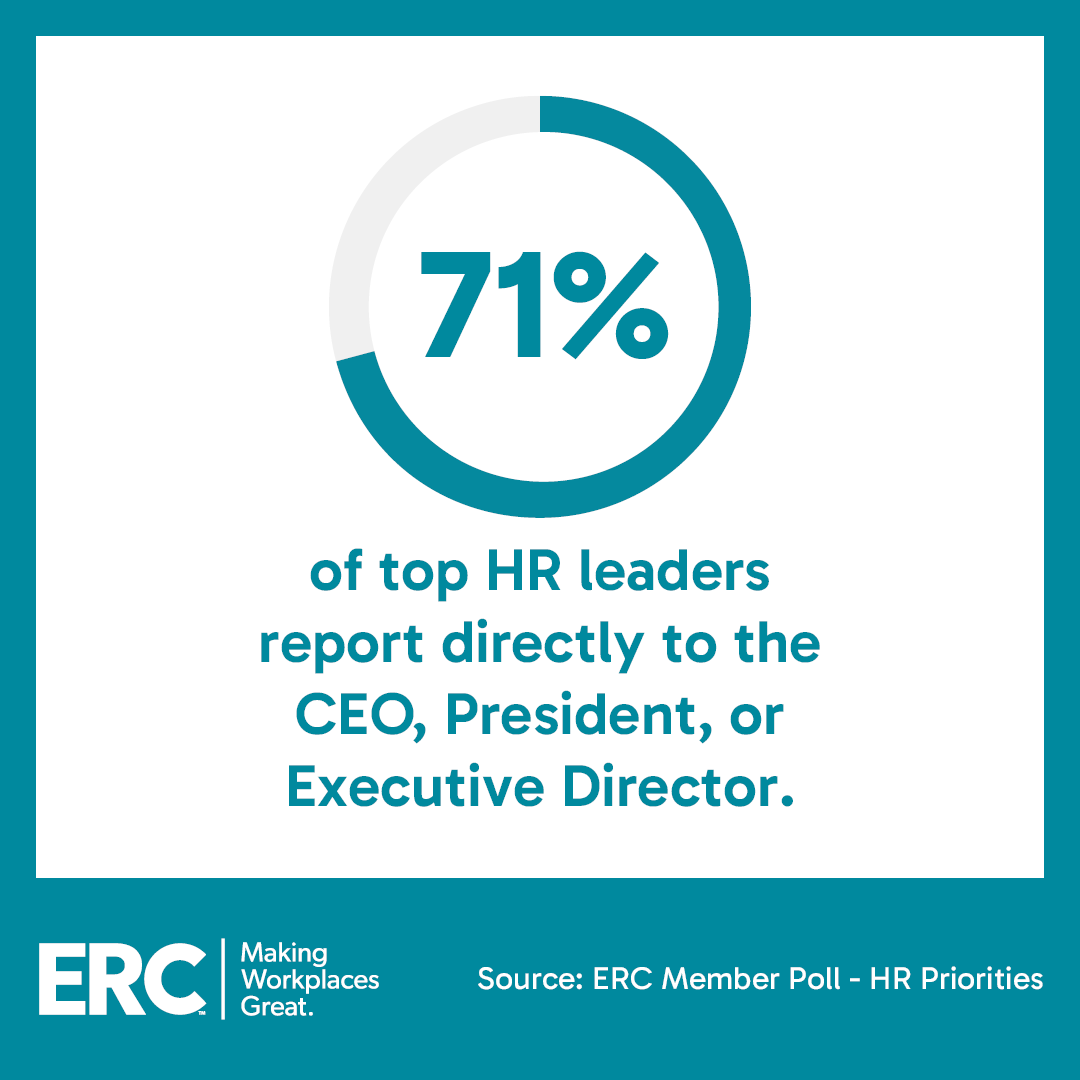
While the field of HR had already been making great strides toward putting the “human” back in Human Resources, the last few years have thrust HR into the limelight in ways we could have never imagined.
From a global pandemic to social unrest to a historic labor shortage, HR departments have been asked to shoulder some of the most challenging human-centric business dilemmas of our lifetime.
Since 2020, this rapid expansion of HR’s “other duties as assigned” has decisively put the days of the “Personnel Department” in the rearview mirror.
Grounded in ERC’s data, let’s look first at how this growing need for HR services is reflected in HR’s organizational footprint. With this information in hand, we will then identify possible pitfalls as well as opportunities for both business and HR leaders to continue evolving their HR strategy for the mutual benefit of the employees and the business alike.
Organizational Footprint: HR is hiring and getting a seat at the table.
Recently ERC’s data has seen a notable shift in the size of HR departments. Just shy of one-third of respondents to ERC’s HR Priorities poll increased their HR FTEs in 2023, a trend that is projected to keep pace in 2024.
In addition, the average HR-to-employee ratio increased from 1.8 in mid-2022 to 2.0 at the end of 2023. That is to say, the size of HR departments is increasing relative to the rest of the employee population. The growth of this metric was seen consistently across all industry types as well as across all organizational sizes.

HR growth is coming not just in the form of FTEs, but also in terms of HR’s proximity to leadership.
When asked to whom the top HR position reports, ERC’s data suggests that the structural gap between HR leaders and the top executive is narrowing. In just the last 18 months, we saw a 10% increase, up to 71%, in the percentage of HR leaders who now report directly at the highest level, i.e., to the CEO, President, or Executive Director.
HR’s Day-to-Day: Don’t let HR growth become a “missed connection.”
What hasn’t changed are the activities and functions that consume most of HR’s time. For several years, ERC has been tracking how HR departments allocate their time to certain practice areas.
Talent Acquisition is consistently top of the list with Engagement & Culture also typically in the top two. Interestingly, in ERC’s most recent poll, Employee & Labor Relations eclipsed Engagement & Culture at the end of 2023 and Compliance began taking up more of HR’s time than Learning & Development.

Obviously, the volume of time spent on any given area doesn’t automatically mean other more forward-thinking projects or strategic priorities aren’t getting addressed at all. But when combined with our data on growth in HR department size and proximity to the C-suite, seeing this reprioritization in the time allocation data gives us pause as to how this growth in HR is being utilized.
We have seen before that a mismatch often exists between where HR would like to spend its time and where its time can actually be spent.
Given that employees (and potential employees) are now specifically seeking out much of what HR has taken on – championing flexibility, wellness, DEI, competitive pay, career growth, and connection with coworkers – it is critical that HR be not just allowed, but fully empowered to invest their time advancing these important initiatives.
Structurally, this means having both proper staffing, as well as clear directives and support from leadership. Ultimately, there is a joint responsibility among business and HR leaders to ensure that the current growth in HR is leveraged in meaningful ways and doesn’t become a missed opportunity.
Communicate for the Future: Good HR strategy is good business strategy.
We know HR is growing, and we know employees are demanding more than ever from the realm of HR. So, as leaders, now is the time to make sure HR has both the strategic knowledge and physical tools to maintain their expanded role within the organization long term. And, as so many things in life do, it all starts with good communication!
If you are one of the 71% of HR leaders who report to the CEO, the current emphasis on “people-first” is a great opportunity to seize on.

Get those strategic HR priorities in front of the big boss and demonstrate the value you bring to the organization! If you are the big boss, when HR asks for that meeting, make it a top priority.
It won’t happen overnight, but when both parties open these lines of communication, not only can HR operate at a higher level, but they can become a true partner in creating a more engaged, productive workforce.
Is your organization already on the path to attracting and retaining top talent? Fantastic! All the more reason to make sure you are listening to your HR partner so they can help the organization be ready to innovate on the next big thing – artificial intelligence, four-day work weeks, who knows what else!?
No matter where your organization falls on the spectrum of melding HR and business strategies, getting to the next level of synergy between the two will undoubtedly have benefits down the road that we haven’t even imagined yet.

